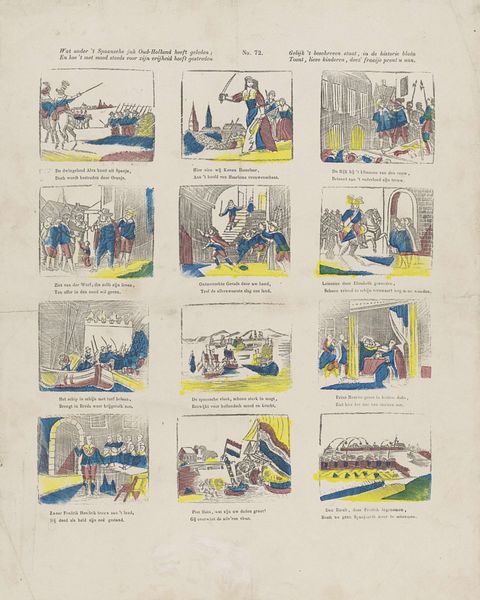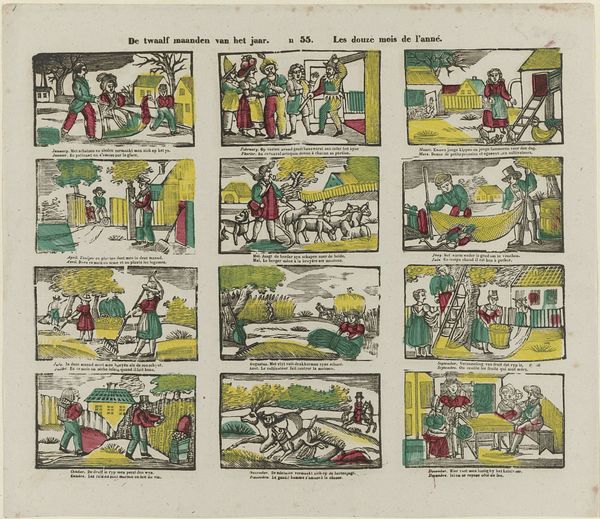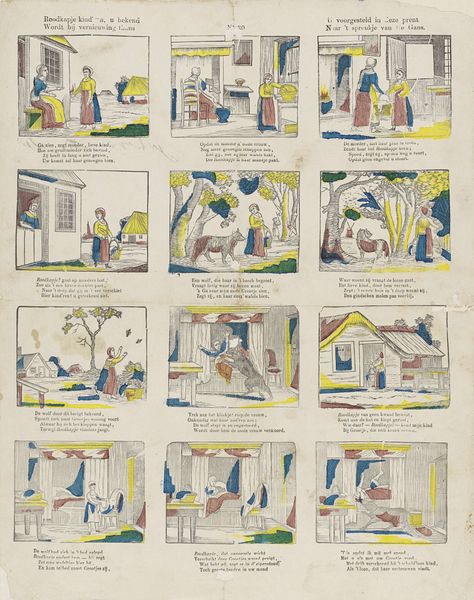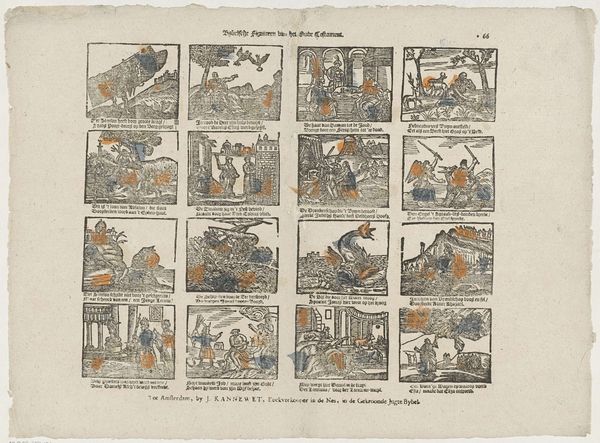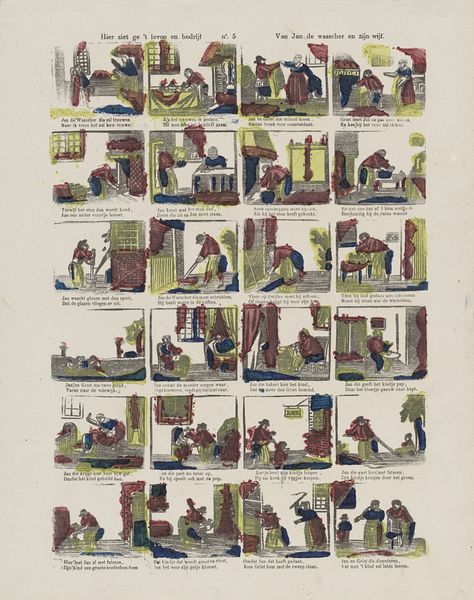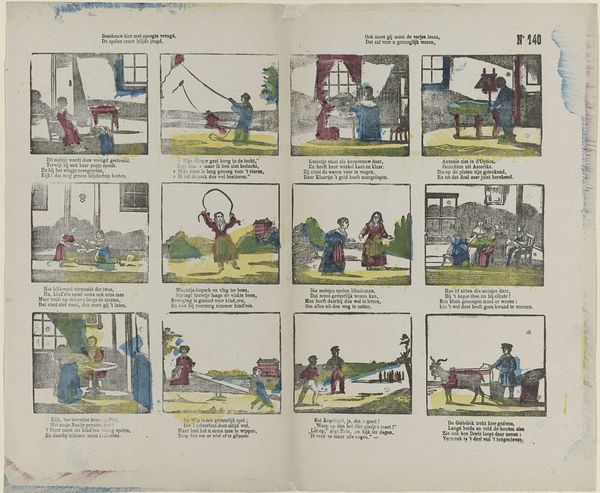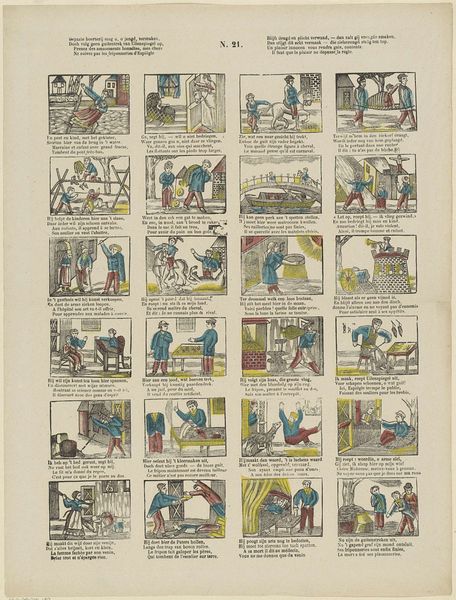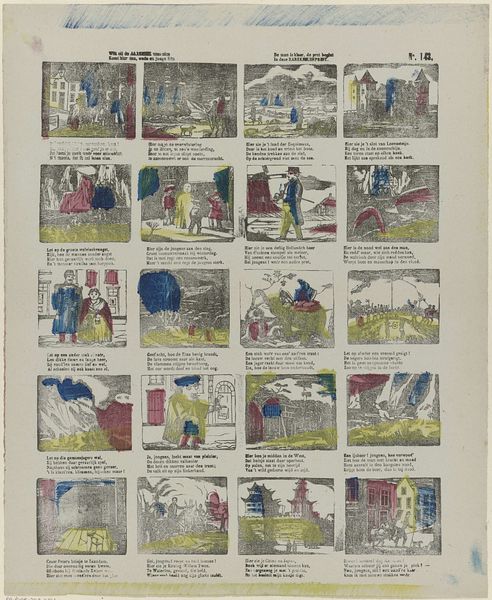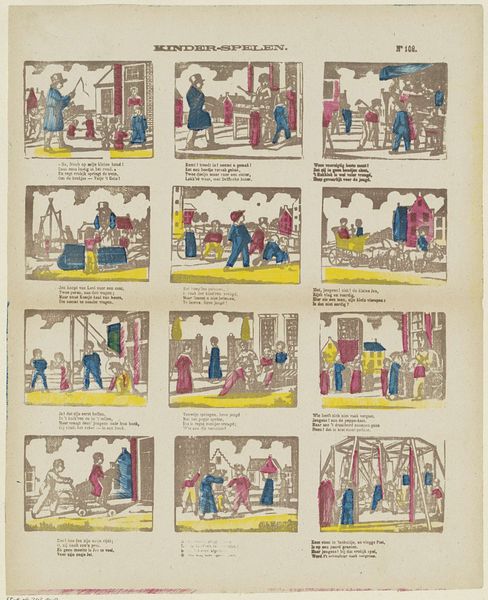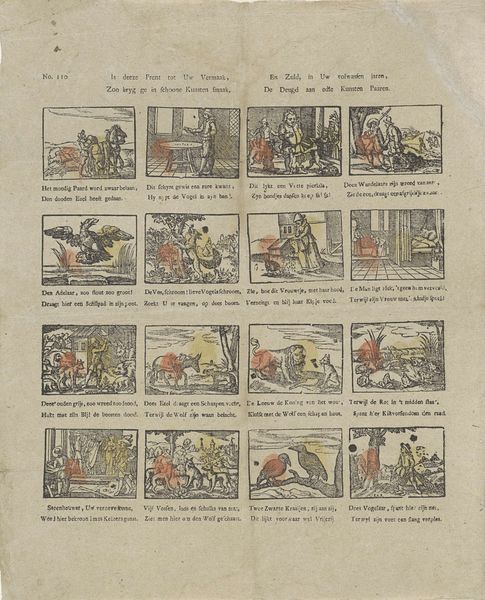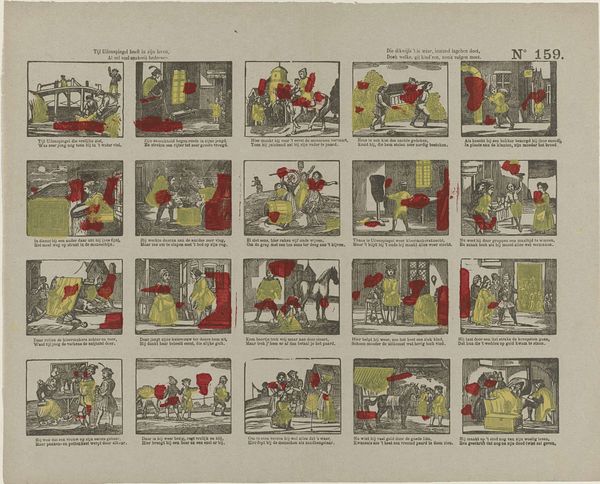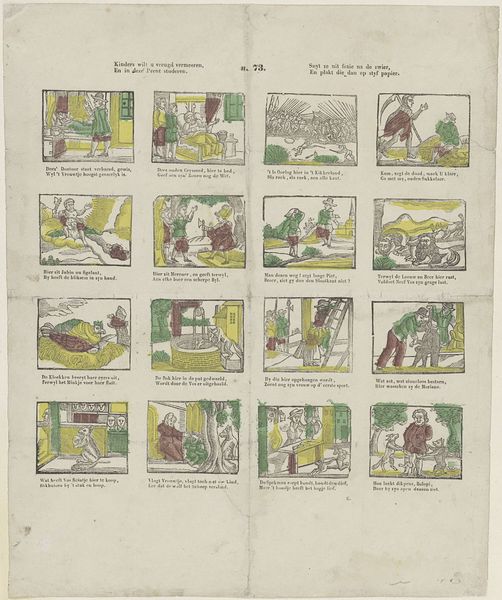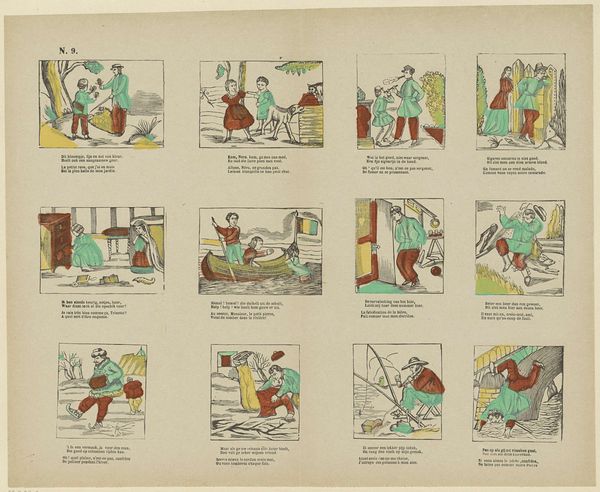
Ziet, kleinen, wat al raars u deze prent vertoont, / Hoe in verschillend vak de handel wordt gedreven, / Zoo wordt de noeste vlijt in iedren stiel bekroond, / Zoo vindt de kleinste stand nog iets om van te leven 1833 - 1900
0:00
0:00
graphic-art, print, etching
#
graphic-art
#
narrative-art
# print
#
etching
#
comic
#
genre-painting
Dimensions: height 389 mm, width 315 mm
Copyright: Rijks Museum: Open Domain
Curator: This fascinating etching, entitled "Ziet, kleinen, wat al raars u deze prent vertoont, / Hoe in verschillend vak de handel wordt gedreven, / Zoo wordt de noeste vlijt in iedren stiel bekroond, / Zoo vindt de kleinste stand nog iets om van te leven", was produced sometime between 1833 and 1900 by Glenisson & Zonen. Editor: My initial impression is of a charming, somewhat naive, storybook illustration. The division into twelve distinct vignettes almost resembles a page of stamps, each offering a little slice of life. Curator: It speaks to the societal structure of its time. Each small panel represents a different trade or profession, illustrating how everyone, regardless of status, can contribute and make a living. We see bakers, construction workers, lumberjacks... It highlights the value of labor, and its role in creating a functional, vibrant society. The accompanying text reinforces this message, suggesting diligent work is rewarded across every class. It serves as a historical document reflecting a time when industrialization and shifts in labor practices were shaping the economic landscape. Editor: The style is simplistic but it seems purposeful in making a kind of universally readable visual. The frequent pairing of figures and their places of work could represent each worker's personal value and integration within society. Do you think the visual emphasis and written descriptions romanticize these simple trades? Curator: Absolutely. It promotes the virtues of hard work within the existing social hierarchy and elides some potential pitfalls and social complexities of that era. But while it may idealize labor, its core message of universal contribution to a society is enduring. Editor: Agreed. The use of recurring motifs, like the rising sun or prominent buildings, evokes cyclical patterns, perhaps suggesting that human work is deeply entwined with natural processes, giving some sense of continuity or eternalness. Curator: These glimpses into trades serve as cultural signifiers too. Baking implies community and sustenance. Lumberjacking reminds the viewer about their interactions with environment, maybe as resources of nature. Ultimately this visual anthology offers us a layered understanding of work ethics from that time period. Editor: Reflecting on this artwork, it’s a small reminder to respect a broad definition of work. Each panel carries complex connotations of both skill and livelihood. Curator: A poignant reflection on how essential various sectors are and how each trade helps to build up a comprehensive image of a society!
Comments
No comments
Be the first to comment and join the conversation on the ultimate creative platform.
